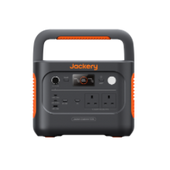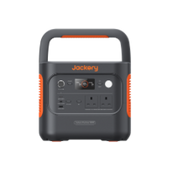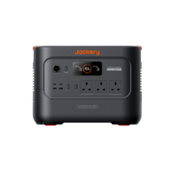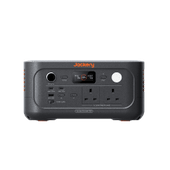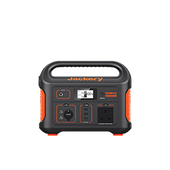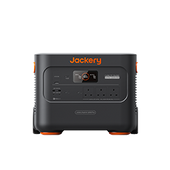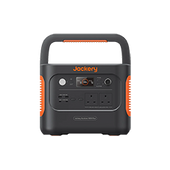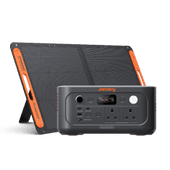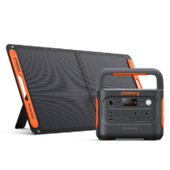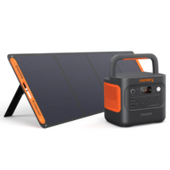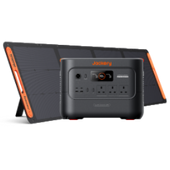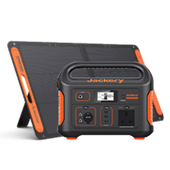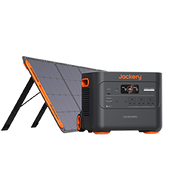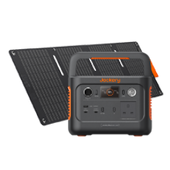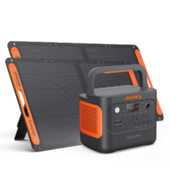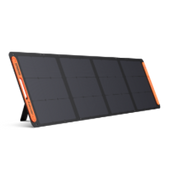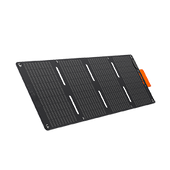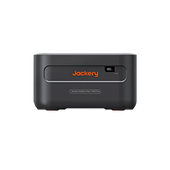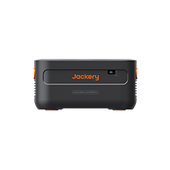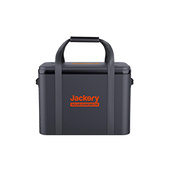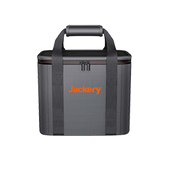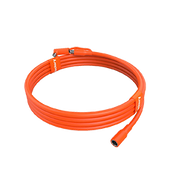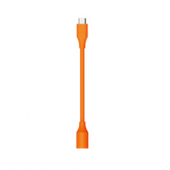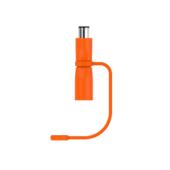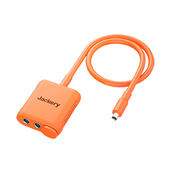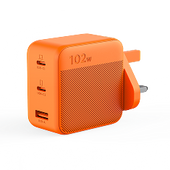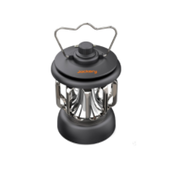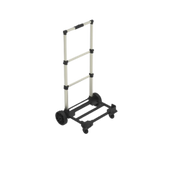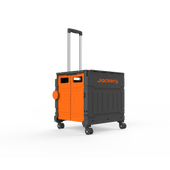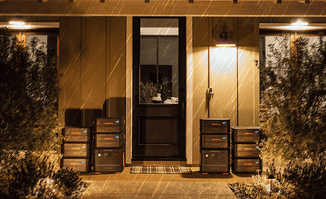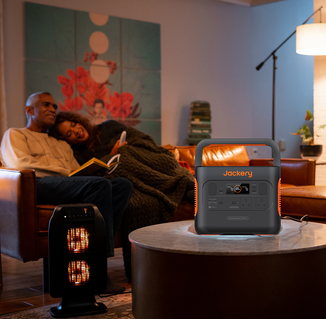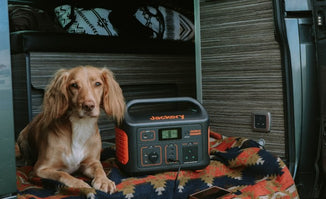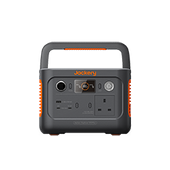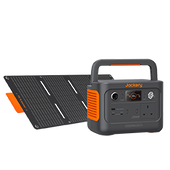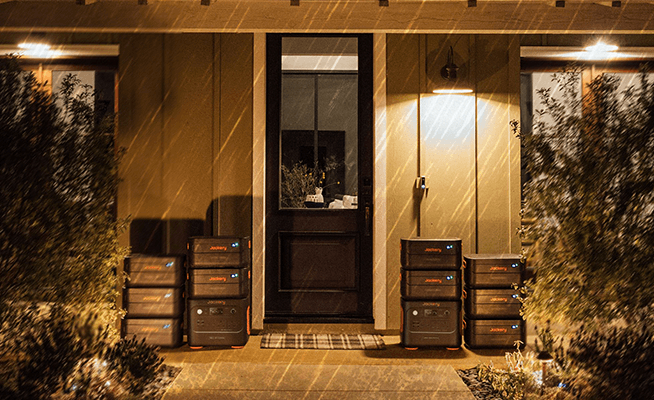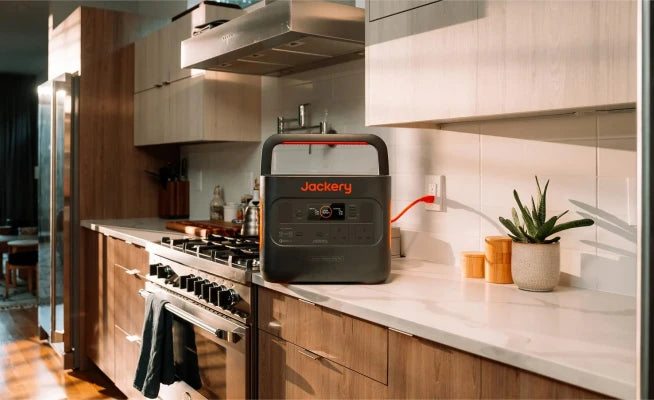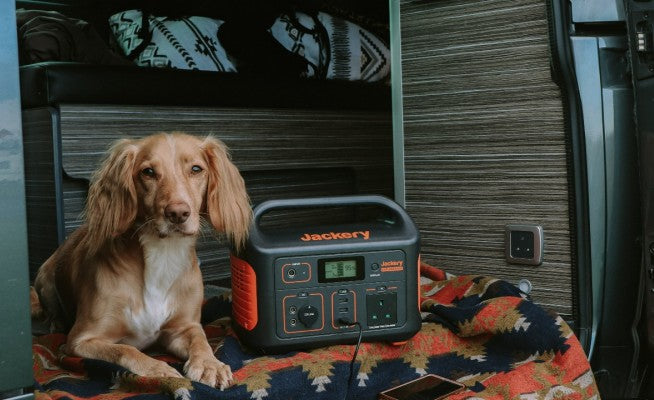A properly operating battery is critical for keeping your lawn mower running smoothly. Whether you have a riding mower or a cordless push mower, the proper battery makes starting and maintaining your equipment simple. With numerous alternatives, including lead-acid and lithium-ion batteries, as well as varying group sizes and amp ratings, it's essential to determine which one is best suited for your mower.
This guide explores the various types of lawn mower batteries, their lifespans, warning signs indicating when they need to be replaced, charging instructions, and proper storage guidelines. Understanding these principles will help you maximise the performance of your mower and prolong the life of its battery.
|
Key Takeaways: |
|
Battery for a Lawn Mower Explained
Over the years, you may have owned and operated several push-style lawn mowers. You know how it goes: you fill up the tank with gas and pull the starter cord. On a good day, the mower will start with a single pull. As the mower ages or wears down, it may need a few extra pulls.
Newer riding lawn mowers often eliminate this sometimes-frustrating operation and instead rely on batteries. A lawn mower battery might help you start the machine and complete your work more quickly. If you've previously used a push mower, you'll probably like this difference. It's beneficial to understand the similarities and differences between these batteries and those in your vehicle or truck.
Many ride-on lawn mower models have a starter battery and an alternator. The mower also features a voltage regulator to maintain its charge and ensure it is ready for subsequent use.
Otherwise, you will wind up with a dead battery. This may not be as bothersome as getting stuck in the middle of nowhere with your automobile. However, you do not want to be sitting on your mower on an overgrown lawn with a battery that isn't charged enough to start the machine.
Common Lawn Mower Battery Types
Lead acid has always been the most used chemical for lawn mower batteries. Lead-acid batteries offer intense burst current and cranking power required for ignition while being relatively affordable. However, they are bulkier, heavier, and have a lower lifetime than contemporary lithium-ion batteries.
Sealed lead-acid (SLA) batteries are a more maintenance-free alternative to traditional flooded lead-acid batteries. However, SLAs require complete discharges to avoid sulfation and may be destroyed if discharged for an extended period. Even with adequate maintenance and charging, life expectancy is typically 1-4 years.
Lithium-ion alternatives, such as LiFePO4, are gaining popularity for mowers and other motorised equipment that require a small, lightweight, and long-lasting power supply.
How Many Watts Does a Lawn Mower Use?
Let's first define watts in relation to electrical power before getting into the details of lawnmower power usage. The power unit used to quantify the rate of energy production or consumption is the watt (W).
It measures the amount of electrical energy required for lawnmowers to operate. Let's now examine the power needs of several lawnmower models and how they relate to the wattage concept:

Gas-Powered Lawnmowers
For many years, gas-powered lawnmowers have been a mainstay of lawn maintenance. Usually, they use gasoline-powered internal combustion engines. Although horsepower (HP) is commonly used to measure these mowers, watts may be used as an alternative.
A horsepower is about equal to 745.7 watts. With a 5 HP engine, your gas-powered lawnmower uses around 3,728.5 watts when in use. Please note that the exact model and engine efficiency may affect this number.
Corded Electric Lawnmowers
The wattage of corded electric lawnmowers, which are known for being easy to use and environmentally friendly, indicates the amount of electricity they consume. Most of the time, these lawn mowers utilise between 1,200 and 1,800 watts. Larger, more powerful models, built for large lawns, may require 1,800 watts or more, while smaller models, designed for smaller lawns, may only need 1,200 watts or less.
Battery-Powered (Cordless) Lawnmowers
Due to their convenience of use and minimal environmental impact, cordless lawnmowers are gaining popularity. Rechargeable lithium-ion batteries are a feature of these lawn mowers. Although its power rating is also given in watts, it may vary significantly depending on the battery's efficiency and capacity. Depending on size and design, cordless lawnmowers may have power outputs ranging from 500 to 1,200 watts.
Factors Influencing Lawnmower Power Consumption
Regardless of the kind, several variables affect how much power lawnmowers use:
Lawn Size and Grass Density: The amount of energy used depends on the size of your lawn and the density of the grass. A more powerful mower could be required for larger lawns or denser grass.
Mower Efficiency: Power consumption is influenced by the efficiency and design of the cutting mechanism. For the same objectives, well-designed mowers often use less energy.
Blade Sharpness: Dull blades need more force and create greater resistance. Power consumption is decreased with routine blade maintenance.
Terrain and Slope: The mower's engine may have to work harder on uneven or steep terrain, resulting in increased power consumption.
Mower Speed: By providing variable speed options, many lawnmowers provide power savings at lower speeds.
Battery Capacity: The runtime of cordless mowers is influenced by battery capacity. Higher-capacity batteries can handle larger lawns, but they may require more energy to charge completely.
Grass Type: The type of grass on your lawn may impact electricity use; thicker, denser grass uses more energy.
How Many Amps Does a Lawn Mower Battery Need?
The following are the essential characteristics that you need to be aware of when choosing a new battery for your mower:
Capacity, often known as Amp-hours or Ah
Maximum discharge, measured in amps of output rated
"Peak Output" (for the requirements of engine cranking)
Batteries for electric start mowers typically have a capacity of 20 to 35 Ah. A higher capacity extends the runtime. Ensure that your budget and mowing requirements allow you to select the largest capacity.
If you check your handbook, the maximum rated discharge current of the batteries should be equal to or slightly higher than the continuous amp draw of your mower. If it is uncertain, a discharge rating of between 50 and 60 amps is advised.
Last but not least, the battery's capacity to handle transient surges should be sufficient to manage the currents required to start a lawnmower. Generally speaking, 100 amps is plenty.

Taking into consideration these parameters, the following are some of the specs that a lithium battery for a walk-behind mower may have:
25-30 Ah capacity
A maximum discharge of sixty amps
a max output of 120 amps
While a bigger battery for a riding mower might be an example of the following:
35-40 amperes of capacity
The maximum discharge is 80 amps
Over 200 amps of peak output
This LiFePO4 battery, if it were of the appropriate size, would provide the necessary amperage for dependable starting and operation, in addition to offering longer runtimes than the original lead acid battery. All of this would be accomplished in a package that was both small and lightweight.
How to Charge a Lawnmower Battery?
One of those generally frustrating situations is when you turn on the key to mow the grass in the sun and all you hear is... nothing. A dead or drained battery is usually the cause. There are many reasons why you need to charge your lawnmower battery, including the fact that it may have been inactive for a while or that your battery is ageing.
The procedures listed below will help you charge your battery and get back to mowing lawns as quickly as possible, assuming it is in a state that allows it to receive a charge.
Finding The Correct Battery Charger
The majority of lawnmowers and lawn tractors run on 12-volt batteries; however, specific models manufactured before 1980 may use 6-volt batteries. If so, please refer to your owner's manual.
Use an intelligent battery charger that is compatible with your battery's voltage. To prevent possible battery damage from an overly strong battery charger, select one with a current rating of 10 amps or less.

Battery Charging
Always make sure your hands are gloved and your eyes are protected with safety eyewear. While protecting your hands, latex gloves may provide you with the dexterity you need. Park your lawnmower or lawn tractor on a level surface, switch off the engine, and ensure all moving parts, including the blades, have come to a complete stop.
To reach your lawnmower or lawn tractor battery, remove the seat or raise the engine cover. If the battery is not accessible, refer to your user handbook to find it. Ensure the battery and its terminals are dry and clean once you've located it.
Please verify that your battery charger is set to the correct voltage; typically, it should be approximately 10% of your battery's capacity. For instance, a 5-amp charger would be perfect if your battery were a 50Ah battery.
Step 1: To connect your intelligent battery charger to your battery, first connect the positive (red) line to the battery's positive terminal.
Step 2: Attach the negative (black) lead to the negative connector on your battery.
Step 3: Next, switch on your smart battery charger by plugging it into the mains.
Step 4: Select the appropriate option for your battery if your Clever battery charger has multiple settings. Please consult your owner's handbook if you have any questions.
Step 5: When the battery is fully charged, intelligent battery chargers will transition to a float charge, which maintains a steady charge in the battery until you're ready to remove it from the charger and use it. You can leave this type of charger on for approximately 12 hours, and your battery should be fully charged by then.
Can Jackery Portable Power Stations Power Lawn Mowers?
In various scenarios, a Jackery Portable Power Station, such as the Jackery Explorer 3000 v or Jackery Explorer 2000 Plus, can be useful for powering a lawnmower, offering flexibility and ease in lawn maintenance. A lawnmower may benefit from a portable power station in the following ways:
A portable power station can serve as a backup power source for an electric lawn mower in the event of a power outage. This ensures that even in the event of a power outage, you can continue to manage your lawn.
You could have leaf blowers, edgers, trimmers, and other gardening equipment in addition to the lawnmower. This equipment can also be powered by a portable power station, providing a flexible solution to all your lawn care needs.
|
|
Jackery Explorer 2000 Plus |
Jackery Explorer 3000 v2 |
|
Electric Lawn Mower (1000-1800W) |
0.9-1.6H |
1.4-2.6H |
|
Battery-Powered Lawn Mower (500-1200W) |
1.4-3.2H |
2.1-5H |
|
Electric Leaf Blower (500-1500W) |
1.1-3.2H |
1.7-5H |
|
Trimmer (300W) |
5.3H |
8.1H |
|
Water Pump (800W) |
2H |
3.2H |
Jackery Explorer 2000 Plus
The Jackery Explorer 2000 Plus is an excellent option for powering lawn mowers and other gardening equipment for several reasons, most notably its high power output, large capacity, and sturdy, expandable construction. However, it is critical to understand how these qualities interact with the unique needs of lawn and garden power equipment.

Continuous Power: The Explorer 2000 Plus offers a constant power output of 3000W. Most electric lawn mowers typically draw between 1200W and 1800W. This means the Jackery can easily handle the continuous power demand of a lawn mower, as well as other high-draw tools, such as an electric leaf blower, hedge trimmer, or chainsaw.
Surge Power: A crucial factor for tools with motors is their "startup surge." When a motor first kicks on, it can draw a brief, but intense, burst of power that is much higher than its continuous running wattage. The Explorer 2000 Plus has a 6000W surge peak, which is well-equipped to handle the initial power demands of most electric gardening equipment.
Large and Expandable Battery Capacity: The Jackery Explorer 2000 Plus comes with a base capacity of 2042Wh. This is enough to run a typical electric lawn mower for a good period. For example, a 1500W mower would run for over 1 hour and 15 minutes. A significant advantage of the Explorer 2000 Plus is its modular, expandable design. You can add up to five additional battery packs to the central unit, expanding the total capacity from 2kWh up to 12kWh. This makes it incredibly versatile for larger yards or for running multiple tools throughout a day.
LiFePO4 Battery: The 2000 Plus uses a Lithium Iron Phosphate (LiFePO4) battery. This is a significant upgrade from older battery chemistries, offering a much longer lifespan of over 4,000 charge cycles to 70% capacity. This means it can be used frequently for years without a significant reduction in performance.
Wheeled Design: The unit weighs 61.5 lbs, making it quite heavy. However, its wheeled design, combined with a pull handle, makes it much easier to transport around a yard, much like a rolling suitcase. This is a practical feature that makes it genuinely "portable" for lawn care, unlike a stationary gas generator.
Jackery Explorer 3000 v2
The Jackery Explorer 3000 v2 is an excellent choice for powering a lawn mower and other gardening equipment, and it stands out as one of the best portable power stations for this purpose. The "v2" model, in particular, offers key advantages that make it a powerful and convenient solution for your yard work needs.

Continuous Output: The Jackery Explorer 3000 v2 has a robust 3600W continuous output. This is more than enough to handle most corded electric lawn mowers, which typically require between 1,000 and 2,000 watts of power. It can also power other high-wattage tools, such as electric chainsaws, pressure washers, and chipper-shredders.
Surge Capacity: Power tools have a significant power surge (or "starting wattage") when their motors first kick on. The Explorer 3000 v2 boasts an impressive 7200W surge capacity, enabling it to handle initial power spikes without shutting down. This is a crucial feature that many smaller power stations lack.
Large Battery Capacity for Extended Runtime: The Explorer 3000 v2 features a 3072Wh capacity, allowing it to run your tools for an extended period. For a typical electric lawn mower (around 1,000W), the Jackery can provide nearly 3 hours of continuous runtime. This is more than enough to mow a large suburban lawn, and it's a massive advantage over the limited runtime of a single cordless mower battery.
Lighter and Smaller: It is noted as the world's lightest and most compact 3kWh power station, weighing only about 59.5 lbs. It features integrated wheels and a telescopic handle, making it easy to move across your lawn, driveway, or patio, unlike a traditional gas generator.
Clean and Quiet Operation: Unlike a noisy and smelly gas generator, the Jackery runs silently and produces no fumes. This means you can work in a peaceful environment without disturbing your neighbours. It's also safe to use in enclosed spaces, such as garages or sheds.
Corded Tools: It eliminates the need for long, cumbersome extension cords that can limit your reach and create a tripping hazard. You can plug your corded mower, trimmer, or leaf blower directly into the power station and take it wherever you need to go.
How Long Does a Battery for a Lawn Mower Last?
There is also a significant distinction in that the battery of a mower may last longer than the battery of a vehicle. In fact, if you take very good care of the battery and perform the necessary maintenance on it, you should not have to replace it for many years.
With that being said, you would likely use the lawn mower nearly as often as you start your car. However, even if you use the battery considerably less often and it spends a lot of time lying inactive in your garage or shed, it should still be just as effective in five years as it is right now.
How to Choose the Right Battery for Your Lawn Mower?
As you start shopping for a battery for your mower, you'll probably ask, “How are lawn mower batteries rated?" Additionally, they utilise the CCA measurement. An indication of how much current the battery is capable of sending at zero degrees Fahrenheit in thirty seconds is referred to as the charging capacity (CCA).
Even though you might have attempted to start your car in these freezing temperatures, it isn't easy to fathom why you would be required to mow your lawn in such a climate. Nevertheless, the ratings can provide you with a good idea of the battery's capabilities and dependability, even after years of use.
If you are looking for a riding lawn mower, consider one with a combustion engine capacity of at least 145 CCA. On the other hand, larger versions with larger engines that produce more than 12 horsepower would require a battery with a capacity of up to 300 CCA.
To be certain, you can check the label on the old battery, the owner's manual, or the manufacturer's specifications for your electric mower. There is a large majority of lawn mower batteries that are all very similar to one another and belong to the U-1 group in terms of capacity. The U1, the U1-R (reverse posts), and the more uncommon U1-3, which is simply a higher cranking amp version, comprise these components.
When it comes to battery ratings, you'll notice that the bulk of them are based on their size. The battery linked to your lawnmower is most likely designated as Group U1, which means it measures 8.3 inches in length, 5.1 inches in width, and 7.25 inches in height. Please do not overlook this size specification; it is critical that you can fit the batteries in the tray and engine compartment in a way that is both comfortable and secure. Additionally, you will need to be able to connect the cables used for the batteries to it.

What Size Battery for a Lawn Mower?
To achieve the best possible fit and performance, it is essential to select the correct size of lawn mower battery. Lawn mower batteries, in contrast to automobile batteries, are usually smaller and available in a variety of sizes.
These batteries are typically categorised according to the battery group numbers. These classes categorise batteries according to their physical size, ensuring compatibility with specific pieces of equipment. The following is a table that serves as a reference and offers an overview of major battery classes and sizes that are often used in lawn mowers:
|
Battery Group |
Length (inches) |
Width (inches) |
Height (inches) |
Voltage |
|
U1 |
7.75 |
5.1875 |
7.3125 |
12V |
|
YTX30L-BS |
6.5625 |
4.9375 |
6.8750 |
12V |
|
U1R |
7.75 |
5.1875 |
7.3125 |
12V |
|
YTX24HL-BS |
8.0625 |
3.4375 |
6.375 |
12V |
|
21 |
8.19 |
6.81 |
8.75 |
12V |
|
YTX20L-BS |
6.875 |
3.4375 |
6.375 |
12V |
|
22F |
9.5 |
6.875 |
7.3125 |
12V |
|
YTX14-BS |
5.875 |
3.4375 |
5.75 |
12V |
|
22NF |
9.4375 |
5.5 |
7.1875 |
12V |
|
YTX12-BS |
5.875 |
3.5 |
5.125 |
12V |
|
24 |
10.25 |
6.81 |
8.87 |
12V |
|
YTX9-BS |
5.875 |
3.4375 |
4.125 |
12V |
|
27 |
12.06 |
6.81 |
8.75 |
12V |
|
YTX5L-BS |
4.4375 |
2.75 |
4.125 |
12V |
|
30H |
13.5 |
6.81 |
9.25 |
12V |
|
31 |
13 |
6.72 |
9.44 |
12V |
|
45 |
9.4375 |
5.5 |
8.75 |
12V |
|
70 |
9.0625 |
7.0375 |
7.8125 |
12V |
|
4D |
20.75 |
8.75 |
9.88 |
12V |
|
8D |
20.62 |
10.95 |
10.17 |
12V |
(Source: Manly Battery)
When searching for a replacement battery for your lawn mower, it is crucial to ensure that the battery group you choose is compatible with your mower's requirements.
Batteries that belong to the same group are often compatible with one another, even when manufactured by different companies. You should always check the handbook that came with your mower or the manufacturer's specifications to ensure you choose the appropriate size for compatibility and safe operation.
How to Properly Maintain Your Lawn Mower Battery?
Maintaining your batteries will extend their lifespan, saving you money on replacements and reducing irritation when it's time to cut the lawn. Tips include:
Keep the terminals clean. If you see any accumulation on the terminals, clean them with a soft brush and neutraliser spray.
Keep the connections strong. Loose or filthy connections may prevent charging and cause startup issues. Check the battery cables monthly to ensure they are tight.
Charge the battery regularly. If the mower is left idle for several weeks or longer, the battery may lose charge. A trickle charger will keep the battery fully charged.
Store the batteries for the winter. When storing the mower, please remove the battery and keep it in a cool, dry area to avoid freezing or degrading.
How to Store a Lawn Mower Battery Safely During the Winter
To guarantee that your lawn mower battery is ready for use in the next mowing season, store it properly throughout the winter months. By taking these actions, you can avoid excessive wear and increase the battery's lifespan.
Remove the battery: It's advisable to remove the battery from your mower if it will be stored for an extended period. It may be challenging to begin in the spring if you leave it attached, since it may discharge gradually. Disconnect the battery cables carefully, starting with the negative (black) and working your way up to the positive (red) wires.
Please keep it in the battery box: To shield the battery from corrosive substances, moisture, and physical harm, place it in a battery box. Any possible leaks are also contained in a box, which helps protect your storage space from infection.
Select a Dry, Cool Storage Space: The battery should be kept dry and cold, as in a basement or garage. Avoid storing it in extremely cold or hot conditions, as this may shorten the battery's lifespan.
Maintain a Fully Charged Battery: Attach the battery to a smart charger or trickle charger to keep it fully charged throughout the winter. While smart chargers automatically cut off when the battery is fully charged, trickle chargers provide a slow, consistent charge that keeps the battery ready without overcharging.
Regular Maintenance: Check the battery at least once a month. Check that it still has a charge and, if necessary, replenish it with the trickle charger. This technique ensures that the battery is fully functioning for spring and helps to maintain its overall health.
You can extend the lifespan and functionality of your lawnmower battery by following these winter storage guidelines, ensuring dependable starts throughout the next cutting season.
FAQs
The following are frequently asked questions about the lawnmower battery.
1. How do I determine which battery to purchase for my lawnmower?
How do I determine which lawn mower battery I need? Check your mower's handbook or the label on your present battery for information on voltage, group size, and terminal location. You may also bring your old battery to any Batteries Plus shop for a free consultation to help you pick the right replacement.
2. Does it matter what battery I put in my lawnmower?
Choosing a mower battery with a low CCA may result in the engine not starting at all, or if it does start, it may overtax the battery's own structure, wearing it out quicker. A higher CCA battery, on the other hand, will start a smaller engine without difficulty, but it will give no further advantages.
3. How long does a lawnmower battery last?
Three years. On average, you should change your lawnmower battery every three years. However, battery life varies depending on factors such as battery quality, usage patterns, maintenance methods, temperature conditions, and charging habits.
4. Can you revive a dead lawn mower battery?
Connect the dubious battery to a lawn mower battery charger. Set the voltage to 12 volts, which is the industry standard. Most lawn and garden products have this voltage rating to protect users from electrical shock. Allow the charger to recharge the battery for up to eight hours.
5. What is the most common lawn mower battery?
The most prevalent kinds of lawn mower batteries are lead-acid and lithium-ion. U1 lawn mower batteries have the same size but differing cold cranking amps (CCA) ratings, while Group 24 lawn mower batteries are unusual but are often perfect for riding mowers.
Final Thoughts
A lawn mower battery is more than just a source of power; it is required for routine and hassle-free grass upkeep. By selecting the correct size, charging it properly, and storing it correctly, you can ensure that your mower is always ready for the task. Whether you choose a traditional lead-acid or a lithium-ion battery, regular maintenance and proper charging can help extend its life.



